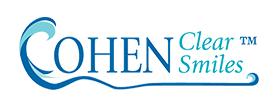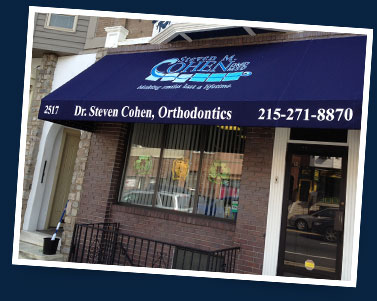What Is The Best Age For Braces?

Are you wondering what the right age for braces is? Maybe you’ve noticed that your child’s teeth look a bit crowded, or they’ve been struggling with harmful habits like thumb-sucking. Or perhaps you’re a teenager or an adult who’s considering getting braces for yourself. If so, you’re in the right place.
The truth is, there isn’t a one-size-fits-all answer to the question “What is the best age for braces?” — braces can be effective at any age! In this article, we’ll explore how braces work for different age groups. And, since you asked, we’ll also talk about what the recommended “best age for braces” is. Let’s get into it!
What Do Braces Actually Do?
Before we start talking about when to get braces, let’s discuss what braces actually do. As you may already know, braces fix different dental issues — like crooked teeth, overcrowded teeth, gaps, missing teeth, and bite problems (malocclusions).
A good bite means your upper and lower teeth fit together properly, with the top teeth slightly overlapping the bottom teeth. When this alignment is off, it can lead to issues like worn enamel, cavities, gum disease, and even difficulty chewing or speaking.
Don’t worry, though, because braces correct these issues by gradually shifting your teeth into the right positions. Not only will this improve your smile, but it’ll improve your overall health, too (including your mental health).
When Should Kids Get Braces?
The American Association of Orthodontists (AAO) recommends that children visit an orthodontist by the age of seven. This early visit doesn’t necessarily mean braces will be needed right away. However, it will allow the orthodontist to identify any developing issues.
At this age, a child’s jaw and teeth are still growing, which means certain problems — like severe crowding or underbites — are easier to address. Even if your child doesn’t need immediate treatment, seeing a pediatric orthodontist in Philadelphia would be a great way to plan for the future.
Some children may not need braces until their preteen or early teen years (around ages 10–14) when most of their adult teeth have come in. Ask your kid’s dentist for recommendations. We’d like to continue to stress that braces can be helpful at any age. Next, we’ll talk about braces for teens and adults.
Braces for Teens
The teenage years are the most common time for people to get braces. By this stage, the permanent teeth are in place, and the jawbone is still flexible, which means making adjustments with braces is still pretty easy.
Many teenagers benefit from orthodontic treatment because it’s an ideal time to fix issues like gaps, crooked teeth, and bite problems. Also, wearing braces during this time allows teens to enjoy a straighter smile by the time they reach adulthood.
Teenagers today have more options than ever. If you’re a teen, you can still get traditional metal braces, but there are also clear aligners (like Invisalign) available for teens. Talk to your orthodontist in Philadelphia about teenager orthodontics options.
Braces for Adults
Think you’re too old for braces? Think again! Adults make up about 20% of orthodontic patients these days. While treatment may take a bit longer for adults than for kids or teens, braces can still be a very effective orthodontic treatment for adults.
Adult braces can correct issues that weren’t addressed earlier — or they can help fix new problems caused by shifting teeth. Wearing braces as an adult can improve more than just the appearance of your smile. A better bite can make chewing and speaking easier, relieve jaw pain, and reduce the risk of tooth decay and gum disease.
The Benefits of Braces (at Any Age)
No matter how old you are when you get braces, wearing them comes with endless benefits. Let’s take a closer look at the benefits of braces below:
Improved Oral Health
Crooked or crowded teeth can make it difficult to brush and floss effectively. Braces straighten your teeth, which makes it a lot easier to maintain good oral hygiene.
Prevention of Long-Term Problems
Correcting bite issues early can prevent future complications (like jaw pain, worn enamel, or even speech problems). For adults, braces can even fix problems that have been causing them pain and discomfort for years.
Improved Confidence
Do you feel self-conscious about your smile? Don’t worry — you’re not the only one. Braces will straighten your smile, which should definitely give you a confidence boost no matter what your age is.
Better Digestion
Misaligned teeth can make chewing food inefficient and uncomfortable. Braces align your teeth and jaw, which means you’ll be able to chew your food more efficiently. This will help with digestion, since it’s easier for your body to process smaller pieces of food.
What to Expect When Getting Braces
If you’re considering getting braces for yourself or your child, you might have some questions about the process. Here’s what to expect when getting braces:
Consultation and Evaluation
The first step will be an evaluation with an orthodontist. They’ll examine your teeth, and come up with a treatment plan that will work best for your particular orthodontic situation.
Fitting the Braces
The process of getting braces usually doesn’t hurt. Brackets are bonded to your teeth, and a wire is threaded through them to create gentle pressure.
Adjustments
Over time, you’ll visit your orthodontist so that they can make adjustments to your braces. These appointments ensure that your teeth are moving as planned.
Managing Discomfort
While braces don’t hurt during the actual application, you may feel some soreness afterward as your teeth adjust to the pressure. Over-the-counter pain relievers can help ease this discomfort.
Conclusion
If you’re looking for expert advice on braces for your child, you should consider visiting a pediatric orthodontist in Philadelphia. Our specialists at Philly Braces focus on treating young patients and creating personalized treatment plans that fit their needs.
No matter how old you are, braces can be life-changing. Don’t hesitate to reach out and schedule a consultation with Philly Braces today.








